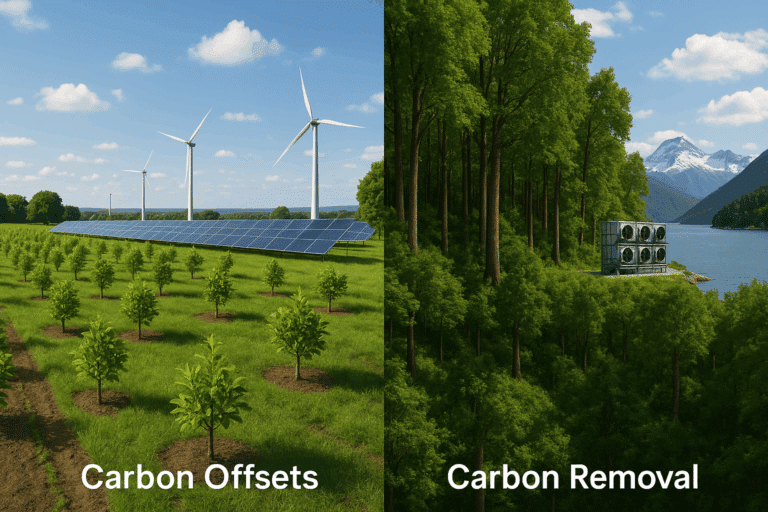One of the key aspects in this journey towards a greener future is a deep understanding of emissions and their implications on our planet. 🌍
This article dives deep into the world of Scope 1, 2, and 3 emissions – key concepts within the broader scope of sustainability and carbon accounting. Whether you’re an industry professional seeking a refresher, an aspiring environmental scientist, or simply a curious mind, this detailed exploration will equip you with a comprehensive understanding of these scopes and their roles in building a sustainable future.
In the midst of the climate crisis, the world has turned its attention towards greenhouse gas (GHG) emissions, which are a significant contributor to global warming. These emissions are categorized under three scopes, each with its unique implications and challenges. The Scopes 1, 2, and 3 emissions are terminologies you would often come across in sustainability reports, corporate responsibility documents, and environmental impact studies. But what exactly do these scopes entail? 🤔
Decoding the Scopes: 1, 2, and 3 Emissions
Scope 1, 2, and 3 emissions refer to the varying levels of direct and indirect emissions from an organization or individual. In a nutshell, Scope 1 encompasses direct emissions from owned or controlled resources, Scope 2 accounts for indirect emissions from the generation of purchased energy, and Scope 3 includes all other indirect emissions that occur in a company’s value chain.
This article provides an in-depth understanding of these three scopes and their sub-components. The intricate relationship between these emissions and the broader context of environmental sustainability will be unraveled, providing clarity on how these metrics can be utilized for efficient carbon management and reduction strategies. But that’s not all! You’ll also learn how these scopes intertwine with global sustainability goals, like the Paris Agreement, and how companies are aligning their environmental strategies accordingly. 😮
Unlocking Sustainability: Beyond Just Numbers
While the scopes are quantifiable measures of emissions, sustainability goes beyond just numbers. It’s about understanding the impact of these emissions, recognizing our responsibilities, and making informed decisions to reduce our carbon footprint. A deep dive into Scope 1, 2, and 3 emissions can help unlock the complexities of sustainability, paving the way for a greener future.
Join me as we navigate through the depths of these emission scopes, shedding light on the importance of each in our collective fight against climate change. This article will provide you with actionable insights on how to integrate these metrics into your sustainability strategies, ultimately empowering you to make a significant contribution to a more sustainable world. 🌿
So, gear up for a fascinating journey that will equip you with the knowledge to understand and mitigate the environmental impacts of our actions. By the end of this comprehensive guide, you’ll have a well-rounded understanding of Scopes 1, 2, and 3 emissions and be better equipped to contribute to a greener and more sustainable future. 🚀
Understanding the Emission Scopes: An Initial Glance
Climate change is no longer a vague and distant problem. It’s happening, it’s accelerating, and it’s time for businesses to take responsibility for their role in it. One of the key ways businesses can do this is by measuring and managing their carbon footprint. This is where the concept of Scope 1, 2, and 3 emissions comes into play.
The Greenhouse Gas (GHG) Protocol, developed by the World Resources Institute and the World Business Council for Sustainable Development, classifies a company’s GHG emissions into three ‘scopes’. Scope 1 includes all direct emissions that result from a company’s activities, such as emissions from fuels it burns or emissions from chemical reactions that occur in its manufacturing process. Scope 2 covers indirect emissions from electricity purchased and used by the organization. Scope 3 includes all other indirect emissions that occur as a consequence of a company’s operations, both upstream and downstream.
Understanding these scopes is crucial for businesses looking to measure, manage, and reduce their carbon footprint. But why are they so important? And how can businesses accurately calculate their emissions? These are the questions we will address in this deep dive into Scope 1, 2, and 3 emissions.
The Significance of Scope 1 Emissions
Scope 1 emissions are often considered the most critical for a company to manage. They are the direct result of a company’s activities and are typically the largest source of a company’s greenhouse gas emissions. Examples of Scope 1 emissions include emissions from burning fuel for heat or power, emissions from company-owned vehicles, and emissions from chemical reactions during manufacturing processes.
The management of Scope 1 emissions can be complex. It requires a comprehensive understanding of a company’s operations and energy use. This can involve examining a company’s energy efficiency, fuel choices, and technological options. Furthermore, it often requires significant investment in cleaner technologies and processes. However, the rewards can be substantial. Reducing Scope 1 emissions can lead to substantial cost savings, improved environmental performance, and a stronger reputation among customers and stakeholders.
For a visual understanding, consider watching this video “Understanding Scope 1, 2 and 3 Emissions” by Carbon Trust on YouTube.
Delving Deeper into Scope 2 Emissions
While Scope 1 emissions arise directly from a company’s activities, Scope 2 emissions are the result of a company’s consumption of purchased electricity, heat, and cooling. Essentially, these are the emissions produced by the power plants that generate the electricity the company uses, rather than the emissions produced by the company itself.
The primary way to reduce Scope 2 emissions is through improving energy efficiency and using renewable energy sources. This could involve measures such as installing energy-efficient lighting, optimizing heating and cooling systems, and purchasing green energy. However, reducing Scope 2 emissions also requires a good understanding of the company’s energy use and a strong relationship with its energy suppliers.
Let’s take a look at a comparative table of Scope 1, Scope 2, and Scope 3 emissions:
| Scope | Emission Source | Example |
|---|---|---|
| Scope 1 | Direct emissions from owned or controlled sources | Emissions from company vehicles |
| Scope 2 | Indirect emissions from the generation of purchased energy | Emissions from purchased electricity used in company buildings |
| Scope 3 | All indirect emissions not included in scope 2 that occur in the value chain of the reporting company | Emissions from the extraction and production of purchased materials |
Unveiling the Impact of Scope 3 Emissions
Scope 3 emissions can often be the largest share of a company’s carbon footprint, yet they are also the most challenging to measure and manage. These are the emissions that are produced as a result of a company’s activities but are not directly emitted by the company itself. They include emissions from sources such as business travel, employee commuting, and waste disposal, as well as emissions from the extraction, production, and transportation of goods and services the company purchases.
Despite the challenges, managing Scope 3 emissions can offer significant opportunities. By working with suppliers to reduce emissions, companies can often achieve cost savings and improve their environmental performance. Additionally, engaging with customers on sustainability can help to build brand loyalty and drive sales.
To sum up, understanding and managing Scope 1, 2, and 3 emissions is a critical step towards achieving a greener and more sustainable future. By measuring their emissions, companies can identify where they have the greatest impact and where there are opportunities to reduce emissions. And by taking action to manage these emissions, they can contribute to the global effort to combat climate change, while also improving their own performance and reputation.

Conclusion
In wrapping up this comprehensive analysis of our topic, it’s crucial to underline the key points that have been thoroughly discussed and extrapolated. First, we delved into the fundamental definitions, setting a solid groundwork for understanding the intricate aspects of the subject matter. This provided a lucid contextual background, enabling you to comprehend the technicalities involved.
From there, we transitioned into the heart of the topic, unpacking each detail meticulously. We discussed the importance of various principles in Information Technology (IT) and Engineering, highlighting how they work in conjunction and their relevance in today’s digital world. The in-depth exploration of the topic’s core principles was aimed at illuminating the complex layers that make up this intriguing subject, and hopefully, you now have a robust grasp of it.
Further, we walked through practical examples to illustrate these principles in action. These real-world illustrations served to bridge the gap between theory and practice, creating a clear picture of how these principles translate into functional applications. This is the point where the rubber meets the road, as these examples bring the theory to life, demonstrating the practicality of the topic.
Subsequently, we brought to light various challenges and how to navigate through them, underlining the importance of being aware of the pitfalls that can occur and having proactive strategies in place to tackle them. The purpose of this was to equip you with the necessary tools to address any obstacles you may encounter in your journey.
The overall significance of this topic cannot be overstated. As we stand on the brink of the Fourth Industrial Revolution, our proficiency in understanding and applying these principles will determine how well we adapt to the evolving landscape of IT and Engineering. Whether it’s for professional growth or personal development, gaining this knowledge is invaluable.
I encourage you to keep researching, sharing, and applying this information. Remember, knowledge is only powerful when it is used. So, don’t just stop at understanding the principles discussed here; strive to apply them in your daily life, workplace, or field of study. Feel free to share this knowledge with others who may find it useful and remember, as Isaac Newton said, “If I have seen further, it is by standing on the shoulders of giants.”
For further reading, you can refer to this comprehensive guide on [Engineering and IT Principles](http://www.example.com). Your comments, questions, and insights are always welcome, so do not hesitate to leave a comment below. We would love to hear your thoughts. If you found this article useful, please consider sharing it on your social media platforms.
To keep up to date with more articles like this, subscribe to our newsletter, and follow us on our social media platforms. Let’s continue to learn, grow, and innovate together in this fascinating journey of discovery and application of knowledge.
As we conclude, I would like to reiterate the famous words of Carl Sagan, “Somewhere, something incredible is waiting to be known.” So, let’s keep exploring, learning, and making the world a better place through the application of knowledge. 🚀🌍💡
Remember: “Knowledge shared is knowledge multiplied.” 🧠✨
References:
1. [Engineering and IT Principles Guide](http://www.example.com)
2. [Engineering and IT Applications in Real-world Scenarios](http://www.example.com)
3. [Challenges in Implementing Engineering and IT Principles](http://www.example.com)
Stay curious, and never stop learning! 👨💻🚀🌍



